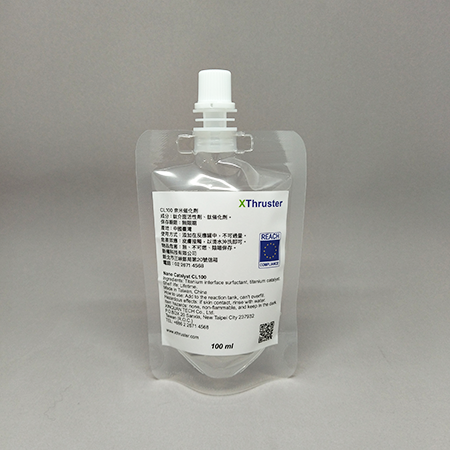Using X catalyst composed of various nanoscale oxides, when exposed to infrared and ultraviolet radiation generated by combustion explosions, "electrons e-" and "holes h+" will be generated. In the chain reaction of "electrons e-", active oxygen with free radicals will be formed, which helps accelerate the reaction rate.
Active oxygen species with free radicals generated by photocatalytic reactions, such as ". O2 -", "HO2.", and ". HO", along with their derivatives "holes h+" and "h+trap", contribute to increasing the temperature during the reaction. This results in more complete and thorough combustion of the fuel.
During the catalytic process, the generated "electrons e-" have the ability to suppress the combination reactions of "nitrogen and oxygen" and "sulfur and oxygen". This effect significantly reduces the emission of environmentally harmful "nitrogen oxides (NOx)" and "sulfur oxides (SOx)" gases, achieving a more environmentally friendly result.
The core technology of X Thruster lies in its unique catalyst, commonly known as X catalyst. This catalyst is composed of various nanoscale oxides, with an approximate molecular size of 20 nanometers.
The main function of this technology is to enhance hydrogen cracking during the engine’s combustion process, promoting the oxidation reaction between hydrogen and oxygen in the fuel. Surprisingly, only a minute amount of catalyst, equivalent to one part per ten thousand of the fuel, is needed to significantly improve fuel combustion efficiency.
In addition, the X catalyst also helps to remove carbon deposits accumulated in the engine, causing them to gradually fall off, thus extending the engine’s lifespan. This means that besides improving combustion efficiency, it can also address various issues caused by carbon buildup in the engine.
It is worth noting that the catalyst is a consumable component in the X propulsion system. Its consumption rate may vary depending on different engine types and displacements. To ensure that the propulsion system continues to operate at its best, users must regularly check the remaining amount of the catalyst and add new catalyst as necessary.
In general, after consuming 1000 liters of gasoline or 2000 liters of diesel, you will need to add 100 milliliters of X catalyst. However, the specific consumption rate may still vary depending on the individual engine conditions.
Constants: h
Optical frequency: v
Electronic: e–
Electric hole: h+
Oxidation potential: 1.23V
XO2+hv → h++e–
e– + O2 → .O2–
.O2–+H+ → HO2. (This is the intermediate of the reaction)
h++H2O → .OH+H+
h+ → h+trap
Electrochemistry:
Physical Chemistry:
In the aforementioned processes, “electrons (e-)” and “holes (h+)” play crucial roles in both electrochemistry and physical chemistry. These charged particles participate in various chemical and electrochemical processes, thereby influencing the overall reaction efficiency and outcomes.

X Catalyst 100 ml

Pipe repair kit

X Catalyst Compliant with EU Directive on Restriction of Hazardous Substances.